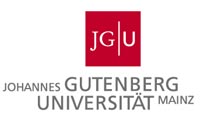New interaction between thin film magnets discovered

We ubiquitously stream videos, we download audiobooks to mobile devices, and we store huge numbers of photos on our devices. In short, the storage capacity we need is growing rapidly. Researchers are working to develop new data storage options.
One possibility is the racetrack memory device where the data is stored in nanowires in the form of oppositely magnetized areas, so-called domains. The results of this research have recently been published in the scientific journal Nature Materials.
A research team from Johannes Gutenberg University Mainz (JGU) in Germany, together with colleagues from Eindhoven University of Technology in the Netherlands as well as Daegu Gyeongbuk Institute of Science and Technology and Sogang University in South Korea, has now made a discovery that could significantly improve these racetrack memory devices.
Instead of using individual domains, in the future one could store the information in three-dimensional spin structures, making the memories faster and more robust and providing a larger data capacity.
“We were able to demonstrate a hitherto undiscovered interaction,” explained Dr. Kyujoon Lee of Mainz University. “It occurs between two thin magnetic layers separated by a non-magnetic layer.” Usually, spins align either parallel or antiparallel to each other. This would also be expected for such two separate magnetic layers. However, the situation is different in this work as the researchers have been able to show that in particular systems the spins in the two layers are twisted against each other.
More precisely, they couple to be aligned perpendicular with one another at an angle of 90 degrees. This new interlayer coupling interaction was theoretically explained through theoretical calculations performed by the project partners at the Peter Grünberg Institute (PGI) and the Institute for Advanced Simulation (IAS) at Forschungszentrum Jülich.
The Mainz-based researchers examined a number of different combinations of materials grown in multi-layers. They were able to show that this previously unknown interaction exists in different systems and can be engineered by the design of the layers. Theoretical calculations allowed them to understand the underlying mechanisms of this novel effect.
With their results, the researchers reveal a missing component in the interaction between such layers. “These results are very interesting to the scientific community in that they show that the missing antisymmetric element of interlayer interaction exists,” commented Dr. Dong-Soo Han from JGU. This opens up the possibility of designing various new three-dimensional spin structures, which could lead to new magnetic storage units in the long term.
Professor Mathias Kläui, senior author of the publication, added: “I am very happy that this collaborative work in an international team has opened a new path to three-dimensional structures that could become a key enabler for new 3D devices. Through the financial support of the German Research Foundation and the German Academic Exchange Service, the DAAD, we were able to exchange students, staff, and professors with our foreign partners in order to realize this exciting work.”
Read more:
http://www.uni-mainz.de/presse/aktuell/8323_ENG_HTML.php – press release “The power of randomization: Magnetic skyrmions for novel computer technology” (7 May 2019)
http://www.uni-mainz.de/presse/20661_ENG_HTML.php – press release “Investigations of the skyrmion Hall effect reveal surprising results” (27 Dec. 2016)
http://www.uni-mainz.de/presse/74601.php – press release “International research team achieves controlled movement of skyrmions” (7 March 2016)
http://www.uni-mainz.de/presse/20145_ENG_HTML.php – press release “EU funding for excellent young researchers in physics” (23 Feb. 2016)
http://www.uni-mainz.de/presse/15777_ENG_HTML.php – press release “Origin of ultra-fast manipulation of domain walls discovered” (5 Oct. 2012)
Dr. Kyujoon Lee
Institute of Physics
Johannes Gutenberg University Mainz
55099 Mainz, GERMANY
phone: +49 6131 39-27621
e-mail: kyulee@uni-mainz.de
https://www.klaeui-lab.physik.uni-mainz.de/team/
D.-S. Han et al., Long-range chiral exchange interaction in synthetic antiferromagnets, Nature Materials, 3 June 2019,
DOI:10.1038/s41563-019-0370-z
https://www.nature.com/articles/s41563-019-0370-z
https://www.klaeui-lab.physik.uni-mainz.de/ – Kläui Lab at the JGU Institute of Physics
https://www.blogs.uni-mainz.de/fb08-iph-eng/ – Institute of Physics at JGU
Media Contact
All latest news from the category: Physics and Astronomy
This area deals with the fundamental laws and building blocks of nature and how they interact, the properties and the behavior of matter, and research into space and time and their structures.
innovations-report provides in-depth reports and articles on subjects such as astrophysics, laser technologies, nuclear, quantum, particle and solid-state physics, nanotechnologies, planetary research and findings (Mars, Venus) and developments related to the Hubble Telescope.
Newest articles

Silicon Carbide Innovation Alliance to drive industrial-scale semiconductor work
Known for its ability to withstand extreme environments and high voltages, silicon carbide (SiC) is a semiconducting material made up of silicon and carbon atoms arranged into crystals that is…

New SPECT/CT technique shows impressive biomarker identification
…offers increased access for prostate cancer patients. A novel SPECT/CT acquisition method can accurately detect radiopharmaceutical biodistribution in a convenient manner for prostate cancer patients, opening the door for more…

How 3D printers can give robots a soft touch
Soft skin coverings and touch sensors have emerged as a promising feature for robots that are both safer and more intuitive for human interaction, but they are expensive and difficult…





















